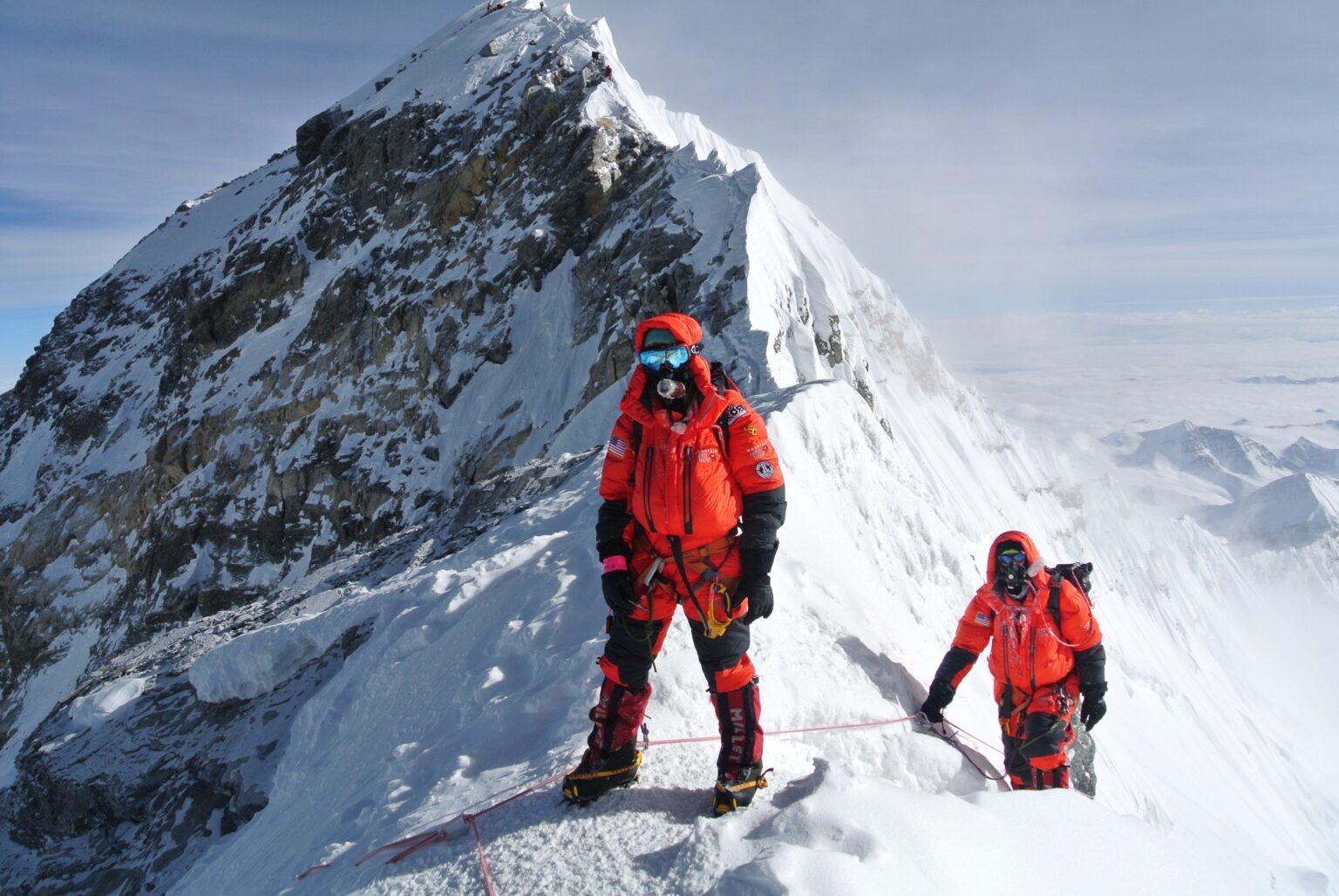The most difficult mountains in the world to climb each have their own unique challenges. Mount Everest’s main challenge is its altitude. K2’s main challenge is its weather, combined with the more technical nature of the climb, which in combination makes any summit bid committing. There are countless other mountains whose difficulties stem entirely from the sheer technical difficulty of rock and ice climbing. This article aims to delve deeper into the importance of thoroughly understanding what makes a mountain hard to climb so you can analyze your objective and maximize your chances of success.
WHAT MAKES A MOUNTAIN CHALLENGING TO CLIMB?
There are many factors that contribute to a mountain’s difficulty, in particular environmental factors such as weather and wind patterns, and also the steepness or features of the mountain itself. Then, there are also physiological factors, such as altitude and what sections of the mountain require the most effort relative to available oxygen.
WEATHER CONDITIONS
The mountains of Patagonia are more coastal and, combined with their extreme latitude, have very unpredictable weather patterns. The latitude of a mountain has a major impact on the weather as a peak that lies far to the north, like Denali, is actually colder than a higher peak like Everest. Furthermore, the aspect of the route—the direction it faces—has a significant impact on climbers. The north face of the Eiger sees almost no sun, while the Rupal Face of Nanga Parbat’s more solar SW aspect gives climbers a big advantage in terms of warmth and the ability to dry wet clothing or equipment.
ALTITUDE
Mountains, such as Masherbrum in Pakistan, have extremely difficult features that require hard technical climbing at very high altitudes. For example, a large rock headwall found relatively low on a climb could be possible to overcome, but attempting the same climbing t at nearly 8000m to do technical climbing would make the same feature impassable. The great unclimbed North Pillar of Masherbrum presents exactly such a challenge.
steepness
When a particular route or mountain, regardless of altitude, is very steep, it can dramatically increase the difficulty of the climb. For example, the north face of the Eiger is far more difficult than its western flank, which is where most North Face climbers descend. Climbing time, physical effort, and risk all increase significantly when steepness increases, and is a primary factor in how difficult the technical climbing is.
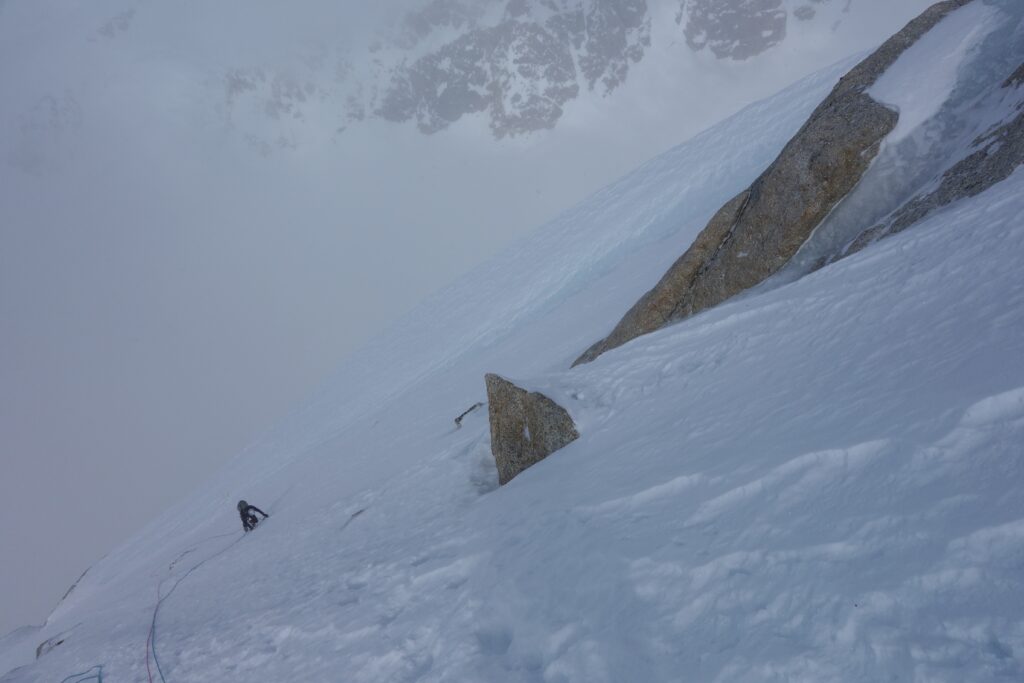
TECHNICAL CLIMBING
Mountains that have a clear and designated climbing route, where permanent fixed lines and other forms of protection are established, are very different in difficulty from mountains that require advanced technical climbing skills. For example, Baintha Brakk and Cerro Torre both require advanced mixed climbing skills, including ice climbing, big wall climbing, and aid climbing. There are fewer climbers who are skilled in all of these disciplines, so having the ability to put all of your technical skills together can make challenging peaks suddenly attainable.
TOP 10 HARDEST MOUNTAINS TO CLIMB
Mount Everest
Elevation: 29,032 feet / 8,849 m
Location: Himalayas (Tibet/Nepal)
Challenges: Elevation, Difficult approach
It’s no surprise that the world’s highest mountain is also considered one of the world’s hardest to climb. While less technical in nature than some other peaks and often climbed with very advanced levels of support, the sheer elevation, exposure to weather, and time spent on the mountain make summitting an extreme challenge. 99% of climbers use supplemental oxygen to make the climb possible. Everest was first climbed without supplemental oxygen in 1978, and when climbed this way, Everest must be near the top of any list of the world’s most difficult climbs.
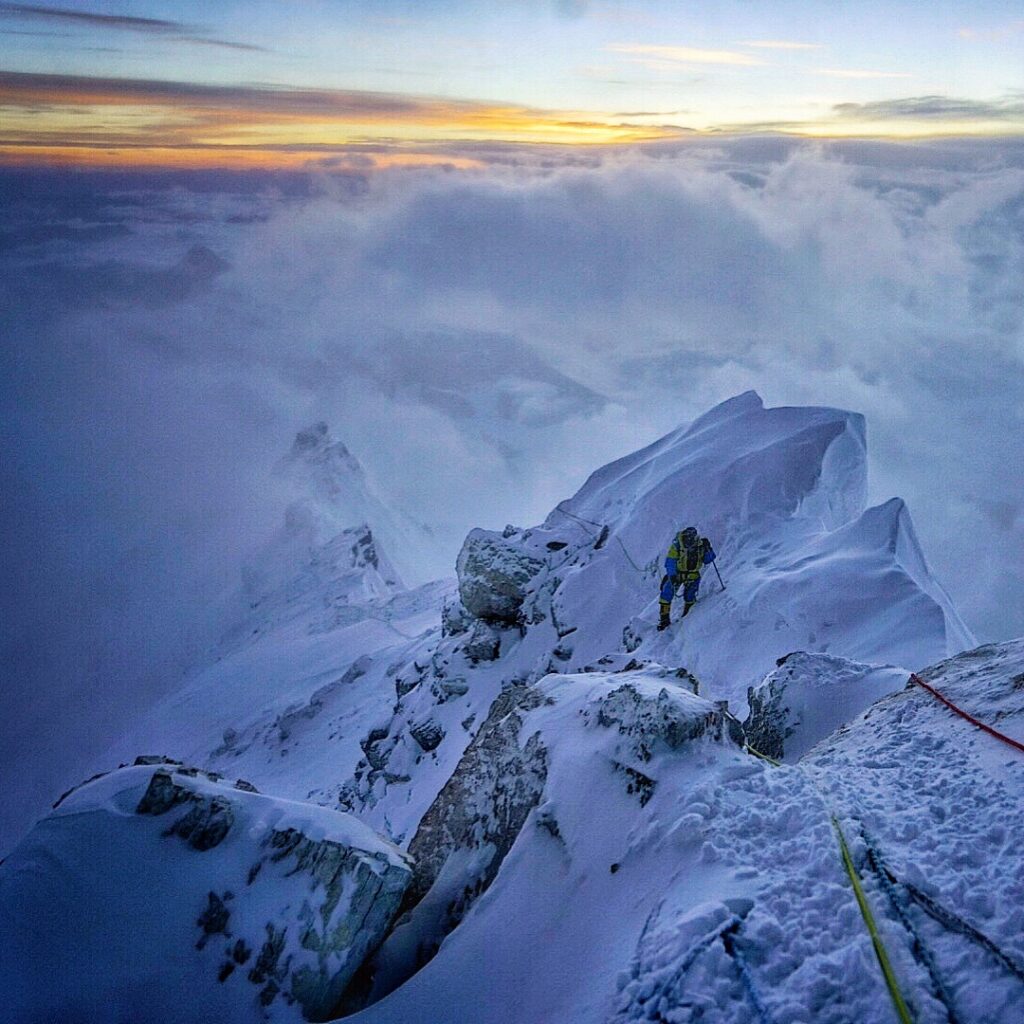
k2
Elevation: 28,251 feet / 8,611 m
Location: Karakoram Range (China/Pakistan)
Challenges: Weather, Elevation, Hazards (cornice collapse, avalanches)
Mountaineers often describe seeing K2 for the first time as a deeply unnerving experience. The world’s second-highest mountain, K2, rises out of the Karakoram range like a giant pyramid of rock, ice, and snow. The technical nature of the climbing and the highly unpredictable weather on K2 mean that there are several possible routes that have still not been climbed. In addition to these hazards, rock fall and ice cornice collapse (an overhang of accumulated ice and snow) contribute to the climbing difficulty.
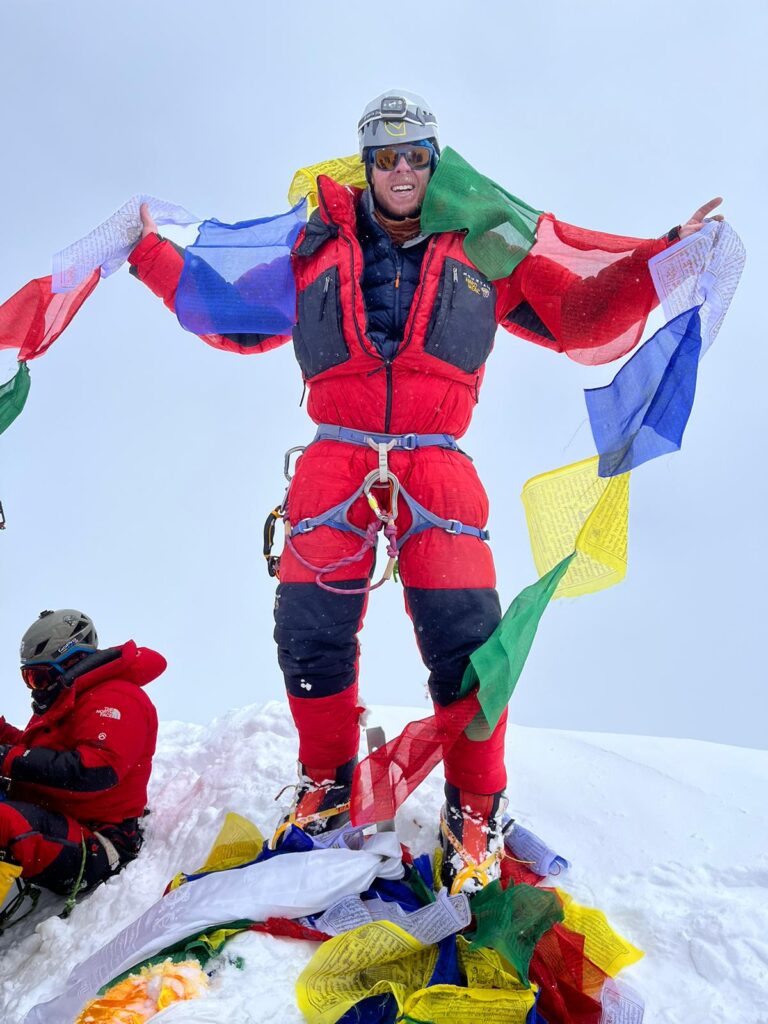
Annapurna I
Elevation: 26,545 feet / 8,091 m
Location: Annapurna Range (Nepal)
Challenges: Remoteness, Cold, Weather
Annapurna I, or Annapurna Main, is the highest peak in the Annapurna mountain range, located in Nepal. As the tenth-highest mountain in the world, there has been considerable interest in summit bids since the 1950’s. Due to its remote location, unpredictable weather, and consistently cold temperatures, and high avalanche risk found on its most common route, it has become known as one of the world’s most treacherous climbs. In addition to environmental factors, the steepness of the routes makes for hard climbing.
Denali
Elevation: 20,310 feet / 6,190 m
Location: USA (Alaska)
Challenges: Remoteness, Unpredictable weather, Steep sections
The highest mountain in North America proves that the world’s hardest mountains to climb aren’t only found in the Himalayan and Karakoram ranges. The remote location of the mountain, combined with the heavily glaciated approach and famous cold, means that climbers need a wide range of skills to summit successfully. It takes a lot of physical endurance to climb Denali, especially if traveling as a small team.
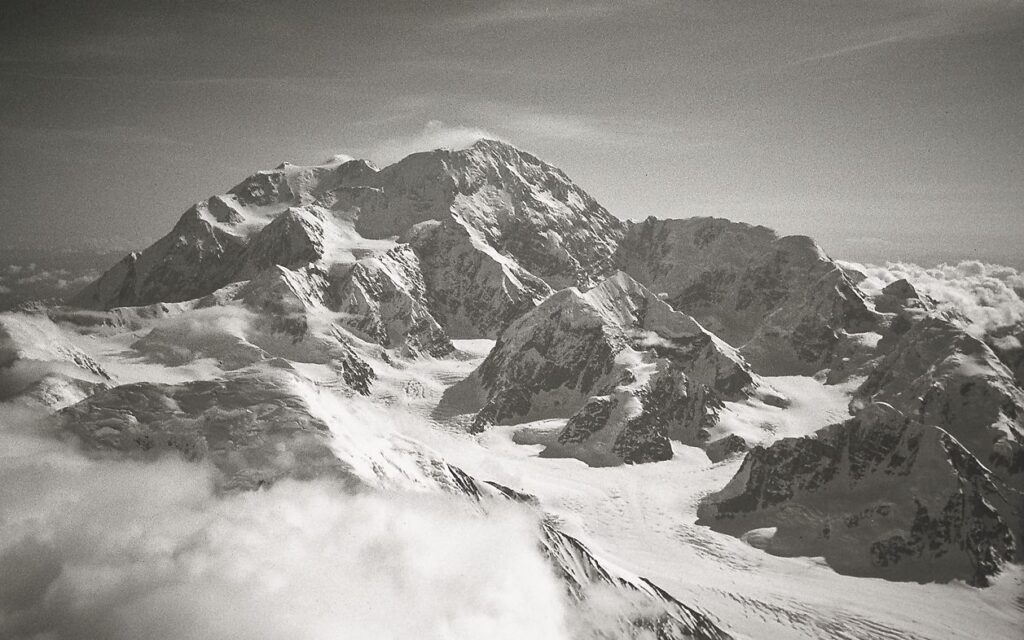
The Eiger
Elevation: 13,015 feet / 3,697 m
Location: Switzerland
Challenges: Storms, Rockfall, Steepness
Most famous for its North Face, or Nordwand, the Eiger is one of the most recognizable mountains in Switzerland. The most challenging routes follow cracks and ice ramps up the sheer north face of the mountain. The cold and lack of sun on the wall also add to its extreme difficulty.
Rockfall, unpredictable storms, and the mixed nature of the climbing require a wide range of skills and a lot of strength. Considered a true alpinist’s mountain, a climb of the Nordwand is a career-defining climb for most.
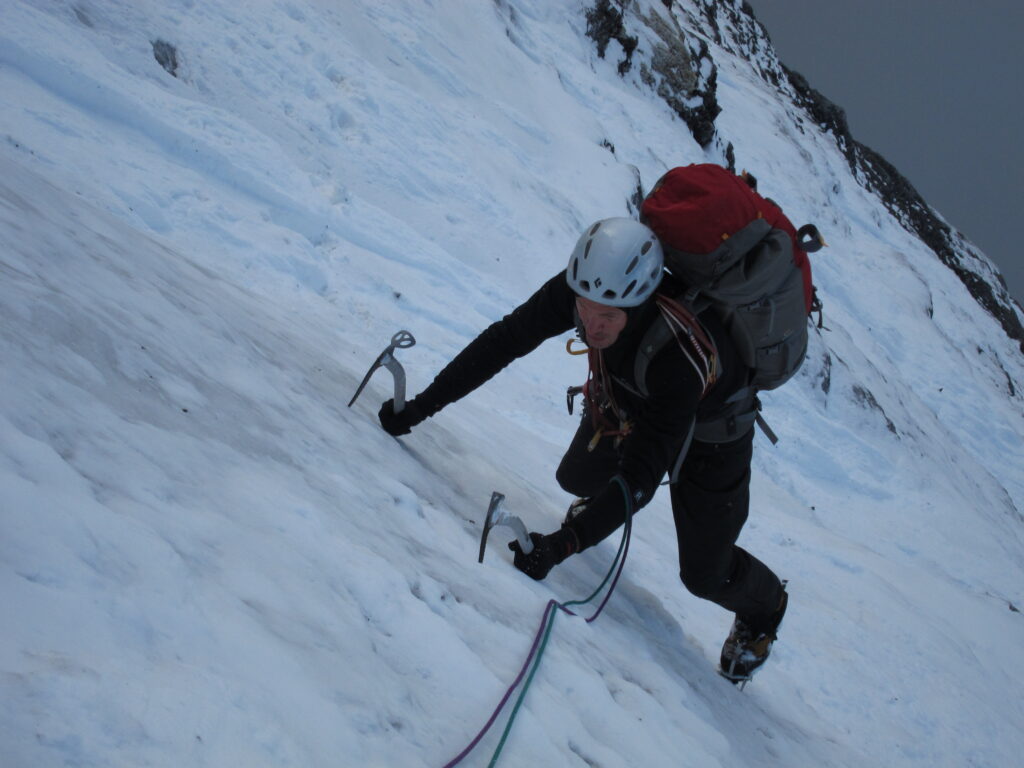
Cerro Torre
Elevation: 10,262 feet / 3,128 m
Location: Patagonia (Chile, Argentina)
Challenges: Steepness, Weather
Located in Southern Patagonia, Cerro Torre is a tower of rock and ice rising over 10,000 ft into the sky. Highly technical in nature, climbers trying to ascend Cerro Torre will have to switch between traditional rock climbing and ice climbing with constant time pressure due to the short weather windows. Due to the coastal climate of Southern Patagonia, high winds and sudden storms lasting days at a time are common. The steepness of the mountain contributes to its difficulty, forcing climbers to reach specific points in order to bivouac or climb with a portaledge. Advances in weather forecasts have vastly improved safety in the last decade, but forecasts don’t change the difficulty of the climb itself.
Nanga Parbat
Elevation: 26,660 feet / 8,126 m
Location: Pakistan
Challenges: High winds, Weather, Steepness, major elevation gain between basecamp and summit
Nanga Parbat, nicknamed “the Killer Mountain,” is the ninth-highest mountain in the world, and it anchors the western end of the Himalaya Range in Pakistan. It earned its nickname due to a high summit-to-casualty ratio. Successful summits are rare. Like many challenging mountains, high winds and unpredictable weather all contribute to its difficulty, but Nanga Parbat also presents unique difficulties, such as the steep grade of its Rakhiot Face and the size of the elevation gain between basecamp and summit.
The south side of the mountain, the Rupal Face, is the biggest wall in the world, rising over 5 kilometers from the valley to the summit. This face has only been climbed three times in human history, most recently by Uphill Athlete’s founder, Steve House (as of this writing, 2024).
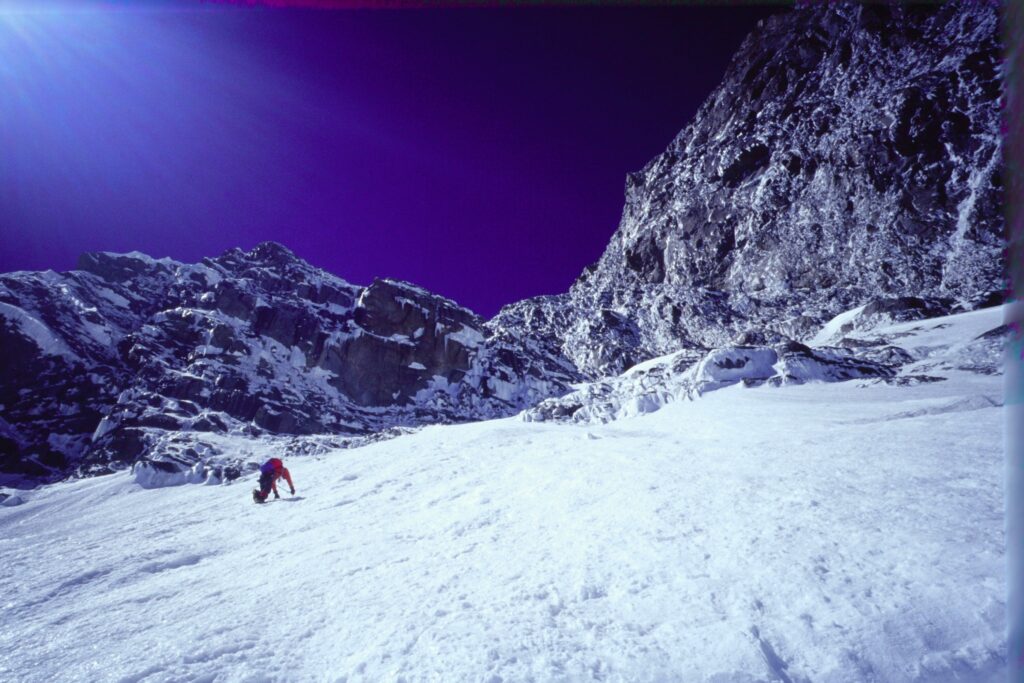
Kangchenjunga
Elevation: 28,168 feet / 8,586 m
Location: Himalayas (Nepal, India)
Challenges: Elevation, Rockfall, Avalanches, Glacier risks
Located astride Nepal and India, Kangchenjunga remained unclimbed for many years due to its sacred status in Sikkim. Climbing from the Indian side is still banned, and so it must be approached and climbed from the Nepalese side. As the third-highest mountain in the world, Kangchenjunga’s elevation poses a significant challenge. Other risks and challenges include common rockfalls, avalanches, and complex glacier travel on the lower mountain.
Ogre I / Baintha Brakk
Elevation: 23,901 feet / 7,285 m
Location: Karakoram Range (Pakistan)
Challenges: Exceptionally steep
One of the hardest and most infrequently climbed mountains in the world, Baintha Brakk is an imposing tower of rock and ice rising out of a subrange of the Karakoram. It is exceptionally steep and requires an extremely high level of technical climbing skill in order to ascend it. Climbing will require mixed, traditional, and aid climbing techniques. Only the best alpinists in the world attempt the Ogre.
Masherbrum / K1
Elevation: 25,659’
Location: Karakoram Range (Pakistan)
Challenges: Extreme avalanche danger, Elevation, Weather, Technical climbing.
Originally believed to be the highest peak in the Karakoram range and thus named K1 before it was discovered that K2 was higher, Masherbrum has only four recorded summits. The last successful attempts were in 1985, with no teams able to achieve success since. All but the greatest modern alpinists largely consider climbing Masherbrum to be an unacceptable risk.
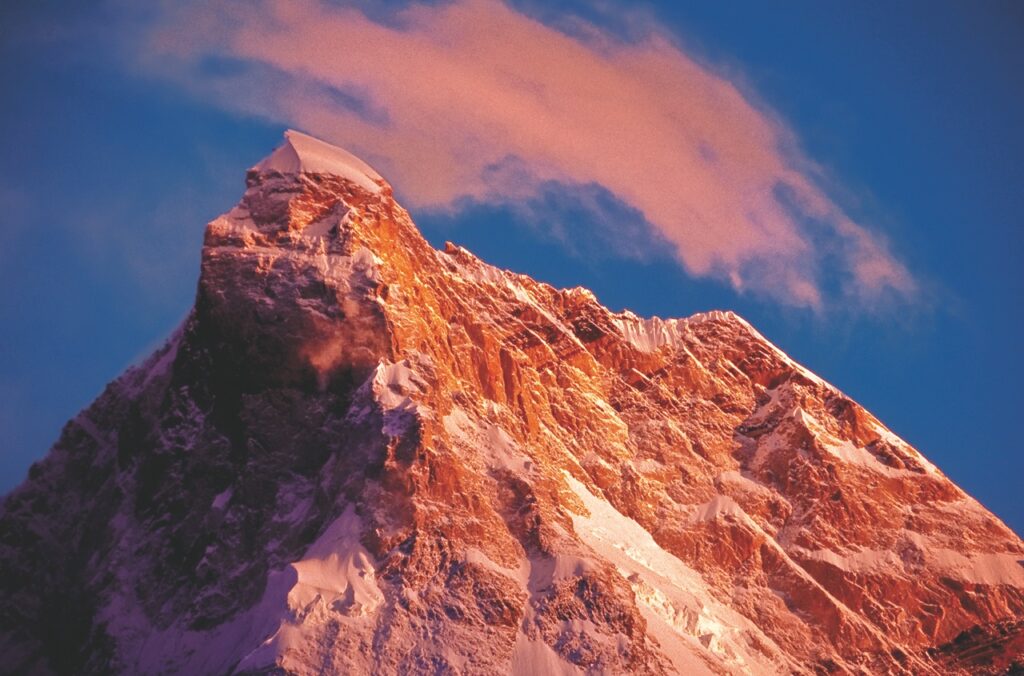
TIPS FOR CLIMBING CHALLENGING MOUNTAINS
In all athletic endeavors, from running a marathon to playing baseball, success is found in process and progression. Properly assessing your skills and strengths, and then determining a plan of action based on increasingly but appropriately challenging objectives will open up new horizons in your climbing. Some of the skills to focus on progressing are discussed below.
Technical Skills
Physical Preparation
Physical training is a major component of being prepared to climb the most challenging mountains in the world. Developing the strength, aerobic endurance, and mobility to perform to your technical abilities in these extreme environments will help make the execution of many climbs possible. This also takes time, as we humans are best suited to develop one physical capacity at a time. Many beginning climbers make the mistake of thinking they can progress much faster than is actually possible.
Risk Assessment
Spending time in mountains and in alpine environments is going to increase your ability to accurately predict risks and analyze situations you might face on more advanced peaks. Reading snowpack, glacier features, and weather patterns are all learned in the mountains and may make a crucial difference in summit success.
gear
Similar to your technical skills, knowing your gear, how to be creative with it, and how to make appropriate changes for each mountain will help you make more effective summit bids.
conclusion
There are many challenging mountains and alpine objectives in the world, and they each come with a unique set of challenges. By boiling down the main features of each climb, improving your own skills, and spending time in the mountains, you can appropriately prepare for even the hardest mountains in the world.
Finding time to prepare technically and physically and knowing the key differences between the storm patterns in the Himalayas versus Patagonia or the mixed climbing styles required for the Eiger and Baintha Brakk, a path towards more advanced climbing opens up. There is no one-size-fits-all approach to these peaks, but there are many aspects of each you can use to enrich your own performance and experiences.
Hardest Mountains to Climb
Table of Contents

